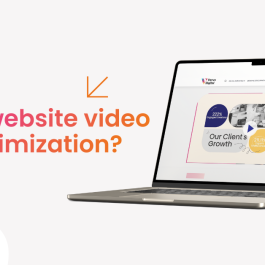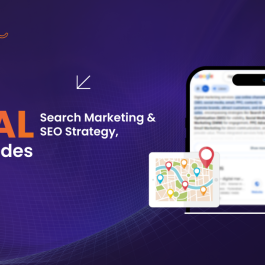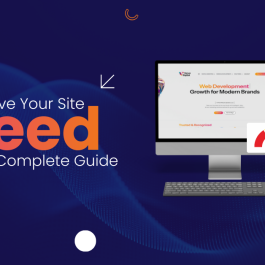5 min read

A visually appealing website is essential for drawing in and keeping visitors in the modern digital era. High-quality images can significantly enhance the user experience and make your website stand out from the competition. However, it’s important to optimize these images to ensure they don’t slow down your website’s loading speed, as this can lead to a higher bounce rate and lower search engine rankings. In this blog post, we will explore the importance of image optimization and provide you with practical tips to maximize your website traffic through effective image optimization techniques.
Table of Contents
The Importance of Image Optimization
When it comes to website optimization, images play a significant role in enhancing the overall user experience. However, unoptimized images can have a detrimental impact on your website’s performance. Here, we will discuss why image optimization tips are crucial for maximizing website traffic:
1.1 Improved Page Loading Speed
Website visitors have become increasingly impatient when it comes to waiting for a page to load. Studies have shown that even a one-second delay in page loading time can lead to a significant drop in conversion rates. By optimizing your images, you can reduce file sizes without compromising on quality, resulting in faster loading times and an improved user experience.
1.2 Enhanced Mobile Experience
With the rise of mobile devices, ensuring that your website’s speed is mobile-friendly has become more important than ever. Optimized images not only improve loading speed but also reduce data usage, making your website more accessible to mobile users. This, in turn, increases the chances of attracting and retaining mobile traffic.
1.3 Search Engine Optimization (SEO) Benefits
Image optimization also plays a crucial role in improving your website’s search engine rankings. Faster page loads are one of the ranking factors taken into account by search engines. By optimizing images and reducing the overall page size, you can improve your website’s SEO performance and increase organic traffic.
Best Practices for Image Optimization
Now that we understand the importance of image optimization, let’s delve into some best practices to maximize your website traffic through effective image optimization techniques:
2.1 Choose the Right Image Format
The choice of image format can significantly impact both the file size and quality of the image. The most commonly used image formats for websites are JPEG, PNG, and GIF. Below is a summary of when to utilize each format:
- JPEG: Ideal for photographs and complex images, JPEG provides a good balance between quality and file size compression.
- PNG: Suitable for images with transparency or simple graphics, PNG offers lossless compression but may result in larger file sizes compared to JPEG.
- GIF: Primarily used for animated images, GIF has limited color support and is best suited for simple graphics or logos.
By choosing the right image format based on the content and purpose, you can optimize image file sizes without compromising visual quality.
2.2 Compress Images without Compromising Quality
Compressing images is a fundamental practice in image optimization. It involves reducing the file size of an image without sacrificing visual quality. There are several tools available that can help you achieve optimal compression, such as:
- Adobe Photoshop: This industry-leading software allows you to save images with different compression options, giving you control over the balance between file size and quality.
- Online Compression Tools: Websites like TinyPNG and Compressor.io offer free online image compression services that reduce file sizes while maintaining satisfactory visual quality.
To guarantee the best possible user experience, keep in mind to balance file size reduction with image quality.
2.3 Resize Images for Web Display
Resizing images is another crucial aspect of image optimization. Many website owners make the mistake of uploading high-resolution images directly from their cameras or smartphones, resulting in unnecessarily large file sizes. By resizing images to match the dimensions required for web display, you can significantly reduce file sizes without compromising visual quality.
There are various tools available for resizing images, both online and offline. Adobe Photoshop, GIMP, and Canva are popular choices that offer easy-to-use resizing features. By resizing images appropriately, you can ensure faster loading times and a smoother user experience.
2.4 Leverage Lazy Loading
Lazy loading is a technique that defers the loading of non-visible images until they are about to come into view on the user’s screen. This technique significantly improves page loading speed by only loading images that are necessary at a given moment.
Implementing lazy loading can be achieved through various plugins or JavaScript libraries, such as LazyLoad or the Intersection Observer API. By adopting lazy loading, you not only enhance your website’s performance but also improve user engagement by reducing initial load times.
2.5 Optimize Image Metadata
Image metadata refers to the information embedded within an image file, such as the title, description, copyright details, and keywords. Optimizing this metadata provides additional context for search engines and helps improve your website’s visibility in image search results.
When saving images, ensure that you fill out relevant metadata fields with descriptive and keyword-rich information. This will not only enhance your website’s SEO but also increase the chances of driving organic traffic through image searches.
Additional Techniques for Image Optimization

In addition to the best practices mentioned above, there are a few more techniques you can implement to optimize your website’s images further:
3.1 Implement Image Caching
Image caching allows browsers to store previously loaded images on a user’s device, reducing subsequent load times when revisiting your website. By setting appropriate caching headers on your server or utilizing caching plugins like W3 Total Cache or WP Rocket (for WordPress users), you can significantly improve page loading speed for returning visitors.
3.2 Enable Content Delivery Network (CDN)
A network of servers spread across various geographic locations is known as a content delivery network, or CDN. By leveraging a CDN service like Cloudflare or Amazon CloudFront, you can deliver static content, including images, from a server closest to your website visitor’s location. This reduces latency and improves overall page loading speed.
3.3 Use Responsive Images
With the increasing number of devices with varying screen sizes, it’s crucial to ensure that your images are responsive and adapt well to different devices. Responsive images automatically adjust their size based on the user’s device screen resolution, resulting in improved user experience and faster loading times.
Utilize HTML’s srcset attribute or CSS media queries to serve different image sizes based on device capabilities. This ensures that visitors on mobile devices receive appropriately sized images, reducing unnecessary data usage.
3.4 Optimize Thumbnails and Alternative Text (Alt Text)
Thumbnails serve as smaller versions of larger images on your website, often used in galleries or previews. Optimizing thumbnails involves compressing them separately from their full-sized counterparts while maintaining visual quality.
Additionally, providing descriptive alternative text (alt text) for every image is essential for accessibility and SEO purposes. Alt text provides textual context about an image for visually impaired users and search engines crawling your website.
Conclusion:
Optimizing images is not only about enhancing the visual appeal of your website but also improving its overall performance and increasing traffic. By following the best practices discussed in this blog post—choosing the right format, compressing images efficiently, resizing appropriately, implementing lazy loading, and optimizing metadata—along with additional techniques like caching, CDN usage, responsive images, thumbnail optimization, and alt text usage—you can maximize your website traffic by providing an excellent user experience while ensuring fast-loading pages.
Remember, image optimization is an ongoing process that should be incorporated into your regular website maintenance routine. By continuously optimizing your images, you can stay ahead of the competition and attract more visitors to your website.
Published: December 26th, 2023








